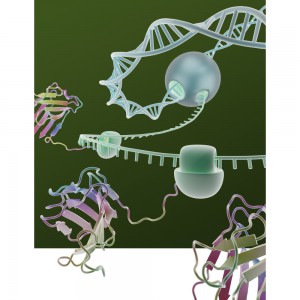
Cell-free gene expression systems are a staple tool for the researcher seeking to understand the regulation of transcription and translation. Many factors can affect the efficiency of cell-free gene expression including vector sequence, reaction components and the template DNA concentration. One factor that has not been extensively studied is how DNA template length influences gene expression.
A recent study by Nishio et al. looks at how the length of the DNA template influences gene expression in cell-free systems using linearized reporter vectors endcoding firefly luciferase (luc). The lengths of the templates compared in this study were: 1717 bp, 4331 bp, and 25,690 bp (luc1.7k, luc4.3k and luc25). Nishio et al. found that the expression level from luc25.7k is 1000-times higher than that with luc1.7k, indicating that the protein yield per target gene is increased by 1000-times of magnitude for a longer template, luc25.7k. In their comparison of luc1.7k and luc4.3k, they also noted increased expression levels for luc4.3k. The authors suggest that the longer DNA molecules in this study exhibit a “shrunken conformation” which effectively increases the local concentration of RNA polymerase and NTPS around the DNA.
Method
Cell-free gene expression was carried out in TnT® T7 Quick Coupled Transcription/Translation Systems. The TnT® Coupled Transcription/Translation Systems provide a simplified and accelerated method to perform in vitro protein translation. These systems have proven to be useful for many downstream applications including, but not limited to, glutathione-S-transferase (GST) pull-downs, gel shift assays, co-immunoprecipitation, characterization of protein modifications, protein:protein and protein:nucleic acid interactions and protein activity studies. Levels of luciferase were measured using the Luciferase Assay System.
Literature Cited
- Nishio, T., Yoshikawa, Y., Yoshikawa, K. et al. (2021) Longer DNA exhibits greater potential for cell-free gene expression. Sci Rep 11, 11739
